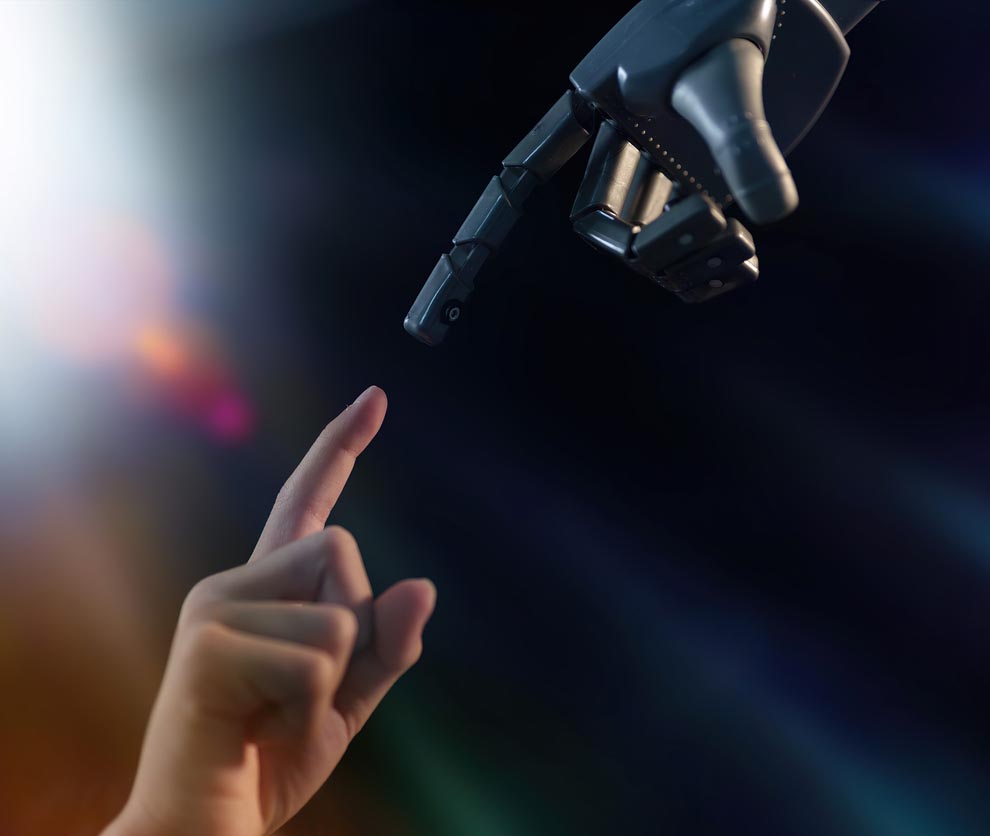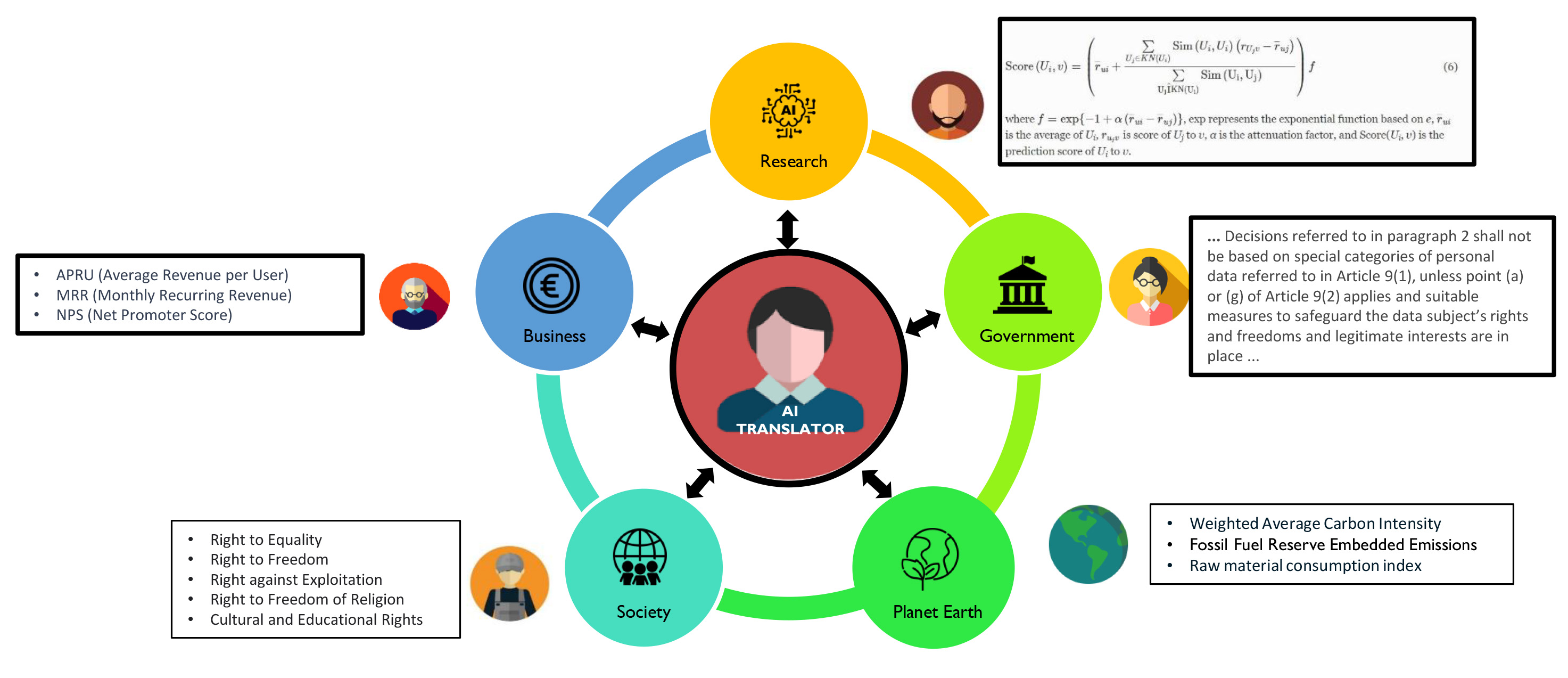Main navigation (level 2) (loaded programmatically)
Cleantech is not the only solution to societal challenges, but it is inevitably a part of it. To lead us out of the current energy crisis and related crises, an accelerated implementation of innovative cleantech solutions is an absolute necessity and artificial intelligence (AI) plays an important role in this.
With 3.6% of the GDP that governments and business members invest in innovation, Belgium is in the top five of the most innovative European countries. To preserve this place, it is important to also look 'over the wall'. After all, new ideas and innovations are often a result of cross-fertilisation between technological domains and industrial sectors.
Increasingly, 'enabling technologies' and 'deep tech' are coming to the fore. They have the potential to accelerate the development, upscaling and implementation of impactful cleantech. For instance, artificial intelligence (AI) and big data, combined with and in balance with human ingenuity, are acquiring an increasingly important stake in our daily lives.
The role of AI in our lives is increasing

In 2022, a brand new, state-of-the art recycling centre was put into operation at Ecoo in Beringen, Limburg. Among other things, it is responsible for recycling polyethylene film (PE film) and uses the latest technologies for this: three high-tech mechanical recycling lines, a real-time monitoring system based on AI and a digital platform with quality control for international standardisation of r-LDPE (recycled low density polyethylene).
This is just one example of how AI is finding its way into our society. There are many other applications, such as mitigating risks to agricultural land and yields, predicting and optimising energy load based on electricity demand, developing new bio-based formulas to replace petrochemical materials and preserving and promoting biodiversity. A number of good examples are discussed in more detail in this report.
But what about energy consumption?
AI clearly has a great deal of potential, but that should not blind us to the unanswered challenges and misunderstandings. And yet attention to the growing energy consumption of AI systems is dwindling. Recent studies divide this astonishing growth into 3 AI eras. They do this based on the computational power required to train the models:
- the pre-‘deep learning’ era (before 2010 - the computing power required for the training phase doubled every twenty months),
- the ‘deep learning’ era (2010-2015 - the computing power required for the training phase doubled approximately every six months),
- the large-scale era (2016-now - the computing power required for training jumps from a hundred to a thousand times).
Inspiration from nature
In our search for a solution to this problem, we are increasingly inspired by nature. For example, when developing completely new hardware architectures, researchers are finding inspiration in the human brain. Recently, imec demonstrated an accelerator that achieved 2,900 trillion operations per Joule. This is ten times more energy-efficient than the current digital accelerators. With these kinds of hardware innovations, we will be able to process data directly in battery-powered devices, such as drones and vehicles.
However, it is not enough to make the hardware energy-efficient. Inefficient algorithms can negate the benefits of an energy-efficient accelerator. That is why we are developing energy-efficient algorithms. We use them for calculations while using our smart devices and to reduce the number of calculations while training AI algorithms in data centres. This too was inspired by natural intelligence: if you are a good tennis player, it is a small step to learning how to play squash. Similarly, we can also transfer an AI model from one domain to an adjacent domain.
After training, we can also further reduce the number of calculations by way of compression strategies. We remove parameters that are of less importance for the end result, resulting in a smaller, faster and more energy-efficient algorithm with similar accuracy.
These strategies lead to a greater reduction in the number of calculations, and they are just a few examples of the techniques for further improving the energy efficiency of our AI systems.
Privacy and ethical risks
In addition to the high, inefficient energy consumption, the current AI solutions also suffer from potential privacy issues and ethical risks, all without a proper legislative framework. Transparency and openness between the various parties around the table is essential. The discrepancy between what developers create, what governments want, and what is offered to customers has increased dramatically. This is primarily due to the ‘silo approach’ during the development of the system and the hidden nature of the technology.
With the new ‘European AI Act’ that will be activated in the coming years, Europe has taken the first step towards a much-needed legislative framework. This European AI law assigns differing risk categories to AI applications. Companies can already start informing themselves about how Europe wants to make AI more transparent and secure.
A multidisciplinary approach according to the Quintuple Helix innovation model
Right from the design phase of AI-based solutions, multidisciplinary work must be done to make the increasingly complex systems more transparent and to keep autonomous decisions secure and energy-efficient. Via the Quintuple Helix, for example, which promotes interaction between the five groups in our knowledge economy: research teams, companies, governments, citizens and nature.
We still have to find the right language for this, because the Tower of Babel that exists today between these five groups is a major stumbling block. The researcher speaks in formulas and algorithms, the business community expresses itself in KPIs, growth and profit, the citizen speaks the language of justice, the government speaks in terms of laws and regulations, and nature is increasingly giving alarm signals about the unceasing misuse of raw materials and fossil fuels. The voice of the latter in particular is still not being listened to enough today.

There is therefore a new and important role for the AI translator. The AI translator is first and foremost a generalist, with sufficient knowledge about each domain to use their social skills to steer the multidisciplinary debate between all parties in the right direction, in order to align the AI system of the future with Sustainable Development Goals in a more balanced way.
Mieke De Ketelaere
Adj. Professor in Sustainable, Ethical and Trustworthy AI, Vlerick Business School
